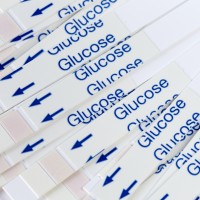 A recent study indicated that areas where there is an increase in air pollution also raises the risk of insulin resistance in kids. This condition is considered as a precursor to the development of diabetes. The findings of the research are published in Diabetologia, the journal for the European Association for the Study of Diabetes or EASD.
A recent study indicated that areas where there is an increase in air pollution also raises the risk of insulin resistance in kids. This condition is considered as a precursor to the development of diabetes. The findings of the research are published in Diabetologia, the journal for the European Association for the Study of Diabetes or EASD.
The said research aimed to explore the association between air pollution and insulin resistance in kids, from which previous studies remained insignificant and scarce. Although there have been studies associating increased air pollution to other health conditions such as artherosclerosis and heart disease, little has been known about its effects on diabetes. This recent study will try to clarify how air pollution may affect the development of diabetes in the future by affecting insulin resistance in kids.
According to Joachim Heinrich of Helmholtz Zentrum Munchen in Neuherberg, Germany, ” Oxidative stress caused by exposure to air pollutants may therefore play a role in the development of insulin resistance. In addition, some studies have reported that short-term and long-term increases in particulate matter and nitrogen dioxide (NO2) exposure lead to elevated inflammatory biomarkers, another potential mechanism for insulin resistance.”
In the study headed by Heinrich, along with Elisabeth Thiering and colleagues, around 397 10-year old kids has fasting blood sugar samples taken and collected within a follow-up of two prospective German birth cohort studies. Levels of traffic –related air pollution were individually estimated from their birth addresses by analyzing the emission from road traffic in the neighborhood, along with population density and land use in the surrounding area. In order to calculate the effect of insulin resistance in the kids to air pollution, the researchers used a model adjusted for several possible confounders of the condition which included the socioeconomic status of the family, birth weight, BMI and pubertal status. The models were also adjusted to include such factors as second-hand smoke exposure in the home.
The findings showed that, in all the crude and adjusted models, levels of insulin resistance were found to be higher in children with more exposure to air pollution. Insulin resistance increased by 17 percent for every 10.6 µg/m3 increase in ambient nitrogen dioxide or NO2. Proximity to the nearest major road also increased insulin resistance risk by 7 percent for every 500-meter distance.
Heinrich further explained, “There is some evidence that air pollution is associated with lower birth weight and growth restrictions – also shown previously in one of the cohorts of the present study – which are known risk factors for type 2 diabetes. Thus, one may speculate that lower birth weight is an intermediate step or ‘phenotype’ between air pollution and insulin resistance. However, we found no evidence to suggest that this may be true in our cohort of children, all of whom had birth weights above 2.5kg.”
“To our knowledge, this is the first prospective study that investigated the relationship of long-term traffic-related air pollution and insulin resistance in children. Insulin resistance levels tended to increase with increasing air pollution exposure, and this observation remained robust after adjustment for several confounding factors, including socioeconomic status, BMI and passive smoking,” he further concluded.
Source: Sciencedaily
Tags: air pollution, Diabetes News, diabetes study, insulin resistance, insulin resistance risk